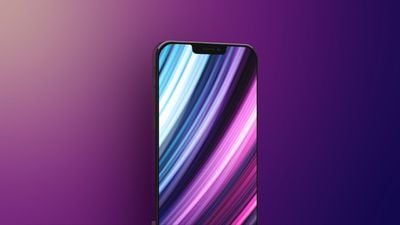Multiple rumors are converging upon the possibility that at least two models in Apple's upcoming iPhone 12 lineup will feature faster 120 Hz displays.

The rumors reach back to July 2019, when Notable Samsung leaker "Ice Universe" first suggested that 2020 iPhones could feature faster displays made by Samsung and LG that would allow for a smoother on-screen experience.
Also last year, DigiTimes linked the then-nascent era of 5G with the wide adoption of higher refresh rate smartphone displays. The Taiwan industry publication based its prediction on the penetration rate of over-120Hz panels in the gaming notebook segment, which was prompting panel makers to step into the sector and develop panels with refresh rates ranging from 120 Hz to 240 Hz.
This year, Bloomberg's Mark Gurman has suggested faster 120 Hz displays could be coming to two high-end iPhone 12 models, and over the weekend, Twitter leaker Max Weinbach suggested that the iPhone 12 Pro, which is expected to come in 6.1-inch and 6.7-inch sizes, will exclusively feature a high refresh-rate 120Hz display.
An increasing number of phones launched in the last 12 months have boasted panels with faster refresh rates than the standard 60 Hz panel, which remains a holdover from traditional CRT displays that required the refresh rate to match the power supply frequency and thereby avoid potential interference.
Apple already uses proprietary variable refresh rate technology in its iPad Pro models under the moniker "ProMotion," which dynamically adjusts the display to the movement of content for fluid scrolling, greater responsiveness, and smoother motion.
The iPad Pro's display refresh rate changes on the fly depending on what's being viewed, which conserves battery life. If you're watching a movie or playing a game, for example, the refresh rate is at 120 Hz, but if you're reading a web page or looking at a photo, you don't need a 120 Hz refresh rate, so it adjusts accordingly. This adaptivity means the refresh rate also matches the viewed content more precisely, eliminating judder and distortion.
Of course, Apple's iPad Pro models use LCD panels rather than OLED, and rumors have suggested Apple will complete its transition to an all-OLED iPhone lineup in 2020 with new 5.4-inch, (two) 6.1-inch, and 6.7-inch models, so this would be the first time we have seen ProMotion tech in an OLED panel.
The implications for the iPhone viewing experience are hard to overstate. Current pixel resolutions as high as they are, doubling the refresh rate would bring a whole new fluidity and realism to viewed content. In that sense, combined with HDR10 support and a wide color gamut, Apple's wider adoption of 120 Hz ProMotion tech could do for OLED iPhones what the company's Retina Displays achieved for LCD iPhones in 2010.






















